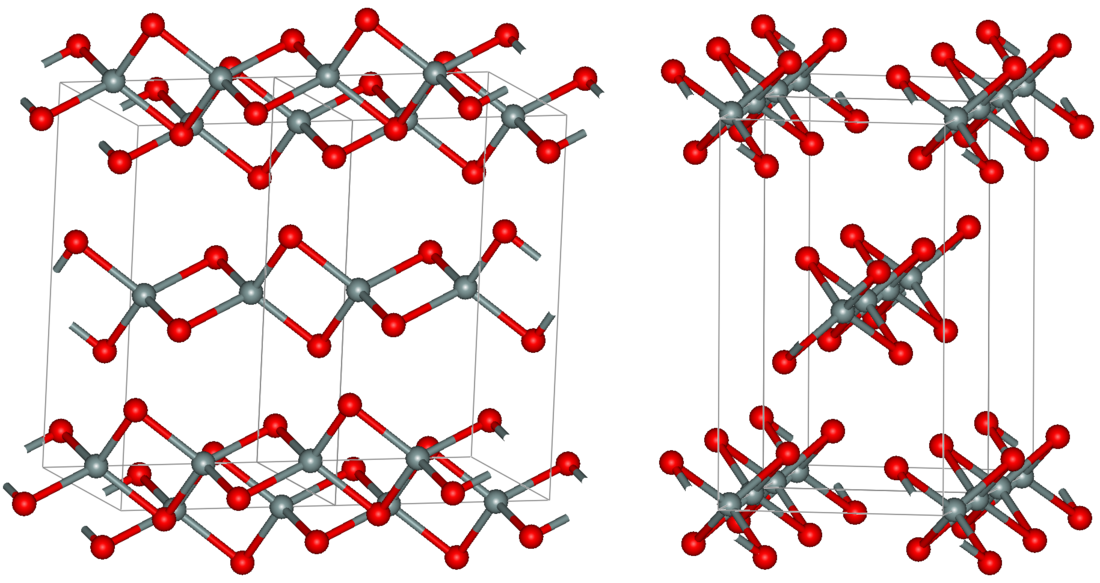Silicon disulfide is the inorganic compound with the formula SiS2. Like silicon dioxide, this material is polymeric, but it adopts a 1-dimensional structure quite different from the usual forms of SiO2.
 | |
 | |
 | |
| Names | |
|---|---|
| IUPAC name
silicon(IV) sulfide | |
| Other names
silicon disulfide | |
| Identifiers | |
3D model (JSmol) |
|
| ChemSpider | |
| ECHA InfoCard | 100.033.935 |
PubChem CID |
|
| UNII | |
CompTox Dashboard (EPA) |
|
| |
| |
| Properties | |
| SiS2 | |
| Molar mass | 92.218 g/mol |
| Appearance | White (samples are sometimes grey or brown) needles. Rotten egg smell in moist air. |
| Density | 1.853 g/cm3 |
| Melting point | 1,090 °C (1,990 °F; 1,360 K) sublimes |
| Decomposes | |
| Structure | |
| Orthorhombic, oI12 | |
| Ibam, No.72[1] | |
| Tetrahedral | |
| Hazards | |
| NFPA 704 (fire diamond) | |
| Related compounds | |
Other anions |
silicon dioxide |
Other cations |
carbon disulfide germanium disulfide tin(IV) sulfide lead(IV) sulfide |
Except where otherwise noted, data are given for materials in their standard state (at 25 °C [77 °F], 100 kPa).
| |
Synthesis, structure, and properties
The material is formed by heating silicon and sulfur or by the exchange reaction between SiO2 and Al2S3. The material consists of chains of edge-shared tetrahedra, Si(μ-S)2Si(μS)2, etc.[2]
Like other silicon sulfur-compounds (e.g., bis(trimethylsilyl)sulfide) SiS2 hydrolyzes readily to release H2S. In liquid ammonia it is reported to form the imide Si(NH)2 and NH4SH,[3] but a recent report has identified crystalline (NH4)2[SiS3(NH3)]·2NH3 as a product which contains the tetrahedral thiosilicate anion, SiS3(NH3)2-.[4]
Reaction with ethanol gives the alkoxide tetraethyl orthosilicate and H2S.[3] With bulky tert-butanol, alcoholysis gives tris(tert-butoxy)silanethiol:[5]
- 3 (CH3)3COH + SiS2 → [(CH3)3CO]3SiSH + H2S
Reaction with sodium sulfide, magnesium sulfide and aluminum sulfide give thiosilicates.[3]
SiS2 is claimed to occur in certain interstellar objects.[6]
References
Wikiwand in your browser!
Seamless Wikipedia browsing. On steroids.
Every time you click a link to Wikipedia, Wiktionary or Wikiquote in your browser's search results, it will show the modern Wikiwand interface.
Wikiwand extension is a five stars, simple, with minimum permission required to keep your browsing private, safe and transparent.

